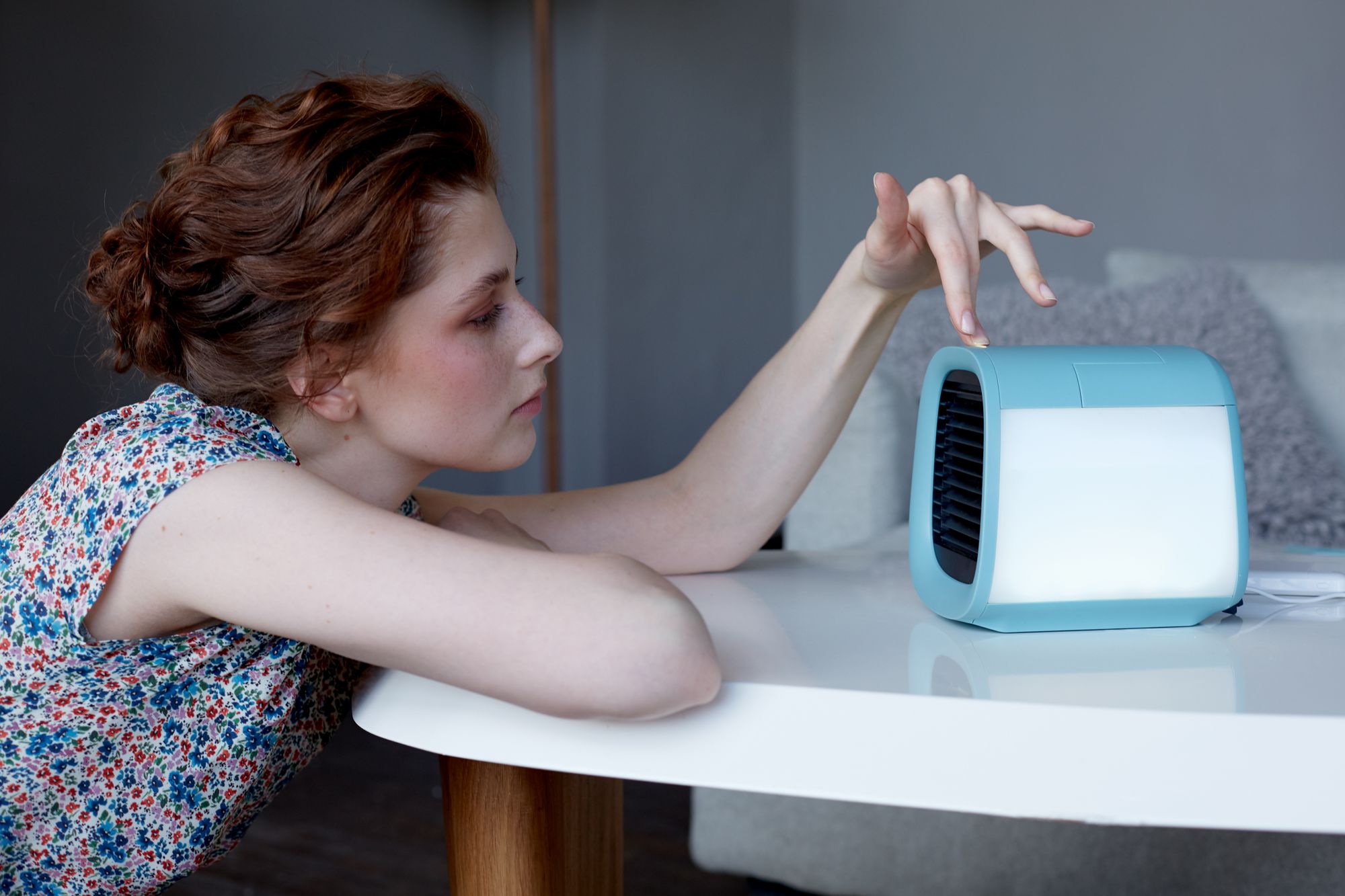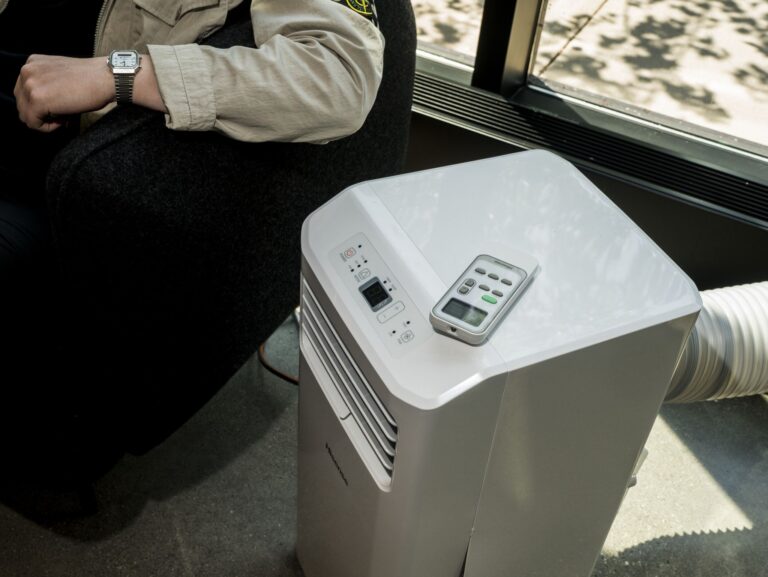Why Isn't My Portable Ac Cooling My Room

Portable air conditioners are a lifesaver during sweltering summers, offering a convenient cooling solution without the hassle of installing a window unit. However, it can be frustrating when your portable AC isn't doing its job. Before calling a professional, let's explore some common reasons why your portable AC might not be cooling your room effectively and what you can do to troubleshoot the issue.
Understanding Common Portable AC Issues
Like any appliance, portable ACs can experience malfunctions. A common scenario is a decrease in cooling performance over time. This might manifest as the unit running but not producing cold air, weak airflow, or frequent shutdowns. Several factors contribute to these problems, ranging from simple user errors to more complex mechanical failures.
Troubleshooting Your Portable AC: A Step-by-Step Guide
1. Power Supply and Basic Settings
Start with the basics. A faulty power supply is a surprisingly common cause of AC issues.
- Check the Power Cord: Ensure the power cord is securely plugged into both the AC unit and the wall outlet. Look for any signs of damage to the cord, such as fraying or cuts. Never use a damaged power cord. If damaged, it needs to be replaced by a qualified technician.
- Test the Outlet: Plug another device into the same outlet to verify it's working. If the outlet isn't working, check the circuit breaker or fuse box and reset or replace the tripped breaker or blown fuse.
- Correct Amperage: Portable AC units can draw a significant amount of power. Make sure the circuit you're using can handle the load. Avoid using extension cords, as they can limit power and cause overheating. If you must use one, ensure it's a heavy-duty extension cord rated for the AC's amperage.
- Proper Settings: Double-check the AC settings. Is it set to "Cool" mode and not just "Fan"? Is the temperature setting low enough? Experiment with lowering the set temperature to see if it improves cooling.
2. Airflow Obstruction
Restricted airflow is a primary cause of poor cooling performance. The AC needs to circulate air to cool effectively.
- Clean the Air Filter: A dirty air filter restricts airflow, forcing the AC to work harder and reducing its cooling capacity. Most portable ACs have a removable air filter that should be cleaned regularly (typically every 2-4 weeks, or more often if you have pets or allergies). Refer to your owner's manual for specific instructions on how to remove and clean the filter. Usually, you can vacuum it or wash it with mild soap and water, ensuring it's completely dry before reinstalling.
- Check the Exhaust Hose: The exhaust hose is crucial for venting hot air outside. Ensure the hose is properly connected to both the AC unit and the window adapter. Make sure the hose isn't kinked, crushed, or blocked by anything. A blocked hose prevents the AC from exhausting hot air, rendering it ineffective. Ideally, the exhaust hose should be as short and straight as possible for optimal performance.
- Clear Obstructions Around the Unit: Ensure there's sufficient space around the AC unit for proper air intake and exhaust. Avoid placing the unit behind furniture or in a cramped corner.
3. Exhaust Hose Installation
Proper exhaust hose installation is critical. If hot air is leaking back into the room, the AC will struggle to cool effectively.
- Secure Window Sealing: The window kit that comes with the AC is designed to seal the window opening around the exhaust hose. Ensure the window kit is properly installed and that there are no gaps allowing hot air to re-enter the room. Use weather stripping or foam to seal any gaps around the window kit.
- Hose Length and Placement: As mentioned earlier, keep the exhaust hose as short and straight as possible. A longer hose reduces airflow efficiency. Avoid placing the hose in direct sunlight, as this will heat the air inside the hose before it's exhausted.
- DIY Solutions: If the provided window kit isn't sufficient, consider DIY solutions to improve sealing. You can use cardboard, plywood, or even thick fabric to create a more effective barrier around the window opening. Ensure the material is properly secured and sealed to prevent air leaks.
4. Condensate Drainage
Portable ACs generate condensation as they cool the air. Most units have a self-evaporating system, but some may require manual draining.
- Check the Water Tank/Drainage: If your AC has a water tank, check if it's full. A full tank may trigger the AC to shut down or reduce its cooling capacity. Empty the tank according to the manufacturer's instructions. If your AC has a continuous drain option, ensure the drain hose is properly connected and that the water is flowing freely.
- Humidity Levels: In very humid environments, the AC may produce more condensation than it can evaporate. Consider using a dehumidifier in conjunction with the AC to reduce humidity levels and improve cooling performance.
5. Room Size and Insulation
An undersized AC unit will struggle to cool a large room, especially if the room isn't well-insulated.
- AC Size: Portable ACs are rated in British Thermal Units (BTUs). Check the BTU rating of your AC and compare it to the recommended room size. If the BTU rating is too low for your room size, the AC will be unable to cool the room effectively. You may need to purchase a larger AC unit or supplement with a fan.
- Room Insulation: Poor insulation allows heat to enter the room, making it harder for the AC to cool. Check for air leaks around windows and doors. Seal any gaps with weather stripping or caulk. Consider using curtains or blinds to block sunlight and reduce heat gain.
- Heat Sources: Minimize heat sources in the room, such as incandescent light bulbs, computers, and appliances. These devices generate heat that can counteract the cooling effect of the AC.
6. Refrigerant Leaks and Compressor Issues
This is where things get more complicated. Refrigerant leaks and compressor problems are usually best left to qualified technicians.
- Refrigerant Leaks: If your AC isn't cooling at all, even after checking all the other potential issues, it may have a refrigerant leak. Refrigerant is a hazardous substance, and attempting to repair a leak yourself is extremely dangerous and illegal in many jurisdictions. Contact a licensed HVAC technician to diagnose and repair refrigerant leaks.
- Compressor Problems: The compressor is the heart of the AC unit, responsible for compressing the refrigerant. If the compressor is failing, the AC won't cool effectively. Compressor repairs are complex and require specialized tools and knowledge. Contact a qualified HVAC technician for compressor diagnosis and repair. Symptoms of a failing compressor include unusual noises, frequent shutdowns, and a complete lack of cooling.
7. Capacitor Issues
Another part that can fail on your portable AC unit, potentially causing it to not cool properly, is the capacitor. The capacitor helps start the motor that runs the compressor and fan. If the capacitor is weak or has failed, the motor may struggle to start, or the fan may run at a reduced speed. Checking or replacing a capacitor should only be done by a professional familiar with electrical components.
- Safety First: Capacitors store electricity even when the unit is unplugged. Attempting to handle a capacitor without proper knowledge and safety precautions can result in severe electrical shock.
- Symptoms: Signs of a failing capacitor can include a humming noise from the unit, the fan not spinning properly, or the unit failing to start.
- Professional Diagnosis: A technician can test the capacitor with a multimeter to determine if it is functioning correctly.
When to Call a Professional
While many portable AC problems can be resolved with simple troubleshooting steps, some issues require professional attention. Call a qualified HVAC technician if:
- You suspect a refrigerant leak.
- The compressor is making unusual noises or not working.
- You suspect a capacitor issue.
- You're uncomfortable working with electrical components.
- The AC unit is still under warranty.
- You've tried all the troubleshooting steps and the AC still isn't cooling.
Maintenance Tips for Prolonging Your AC's Life
Regular maintenance can help prevent many of the problems discussed above and extend the lifespan of your portable AC.
- Clean the Air Filter Regularly: As mentioned earlier, clean the air filter every 2-4 weeks.
- Clean the Coils: Periodically clean the coils (the metal fins on the back or side of the unit) with a soft brush or vacuum cleaner. Unplug the unit before cleaning the coils.
- Store Properly: When not in use, store the AC in a cool, dry place. Cover it with a dust cover to protect it from dirt and debris. Drain any remaining water from the unit before storing.
- Professional Servicing: Consider having your AC professionally serviced every few years to ensure it's running efficiently and to catch any potential problems early.
By following these troubleshooting steps and maintenance tips, you can keep your portable AC running smoothly and enjoy cool comfort all summer long. Remember to prioritize safety and call a professional when dealing with complex repairs or hazardous substances.










